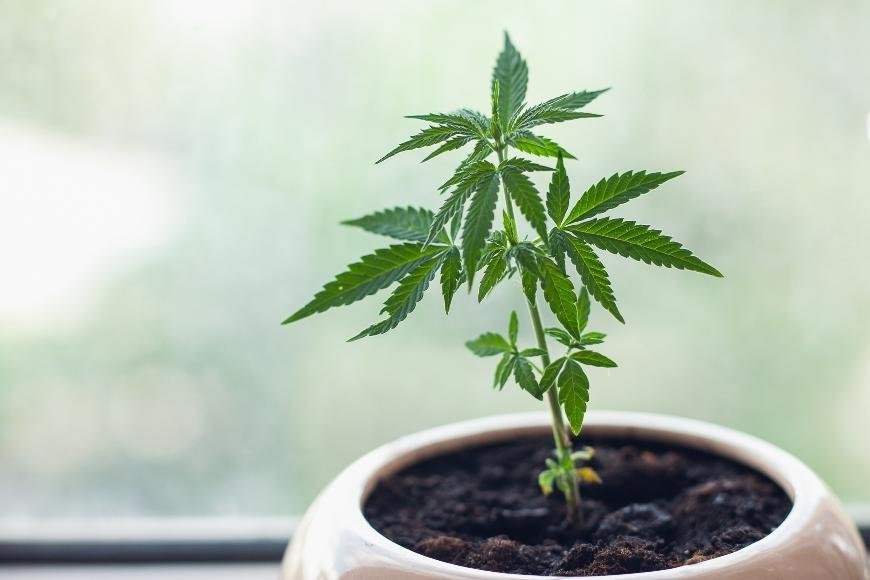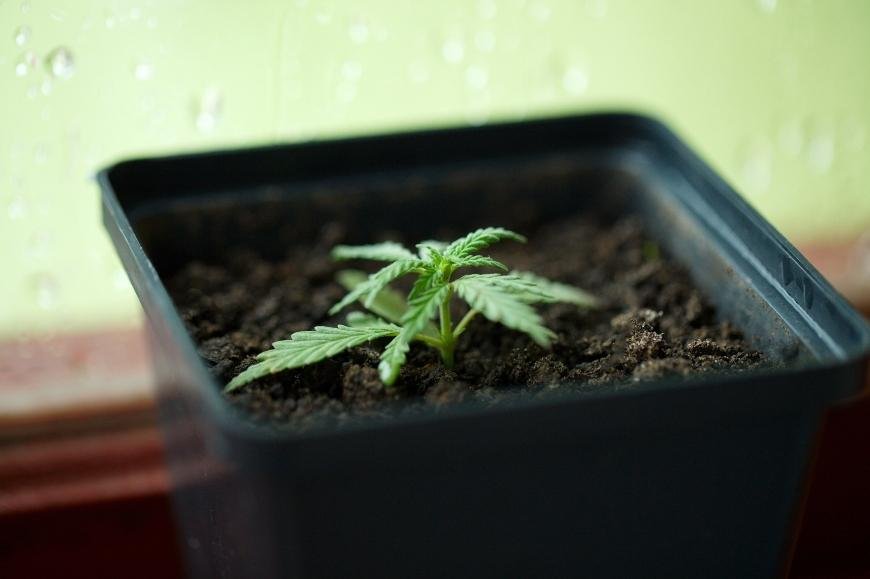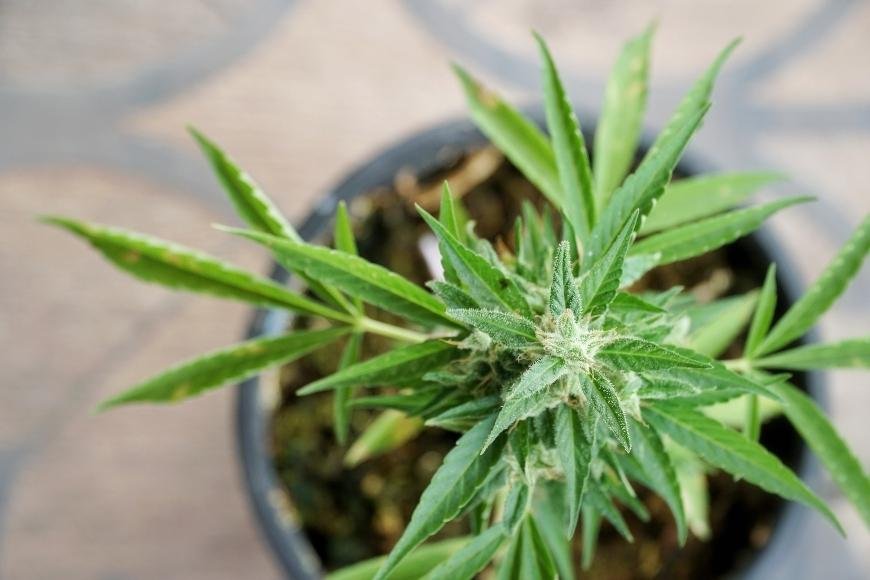How to Grow Cannabis on a Balcony or Terrace
Learn how to grow cannabis on a balcony or terrace: strain selection, containers, nutrients, pest control and maximizing yields for outdoor success.

Learning how to grow cannabis on a balcony or terrace can be an exciting and rewarding endeavor for young adults interested in recreational drug cultivation. With the right knowledge, outdoor growers can successfully cultivate thriving marijuana plants while enjoying several benefits.
In this blog post, we will discuss various aspects of growing weed on balconies and terraces such as selecting suitable strains, using containers with proper drainage, providing adequate nutrients and water, pest control measures, legal issues surrounding cannabis cultivation, and maximizing yields through effective techniques. By following these tips for cultivating cannabis on balconies, you can soon be ready to cultivate your own personal marijuana supply.
Table of Contents:
- Benefits of Outdoor Growing
- Natural Sunlight: The Ultimate Light Source
- Larger Yields in Limited Spaces
- Selecting Suitable Strains
- Containers with Proper Drainage
- Adequate Nutrients and Water
- Pest Control
- Legal Issues
- Maximizing Yields
- Conclusion
Benefits of Outdoor Growing
Growing cannabis on a balcony or terrace offers numerous advantages over indoor cultivation. One of the most significant benefits is the use of natural sunlight, which provides your plants with a full spectrum of light necessary for optimal growth and development. Advantages of cultivating cannabis on a balcony or terrace include the utilization of natural light instead of artificial, which can be beneficial in terms of both cost savings and environmental friendliness.
Natural Sunlight: The Ultimate Light Source
Natural sunlight is essential for photosynthesis, the process by which plants convert light energy into chemical energy to fuel their growth. Unlike artificial lighting systems, natural sunlight contains all wavelengths needed for healthy plant development, including both blue and red spectrums that promote vegetative growth and flowering respectively.
- Blue Spectrum: Encourages strong stem and leaf growth during the vegetative stage.
- Red Spectrum: Stimulates bud production during the flowering stage.
Larger Yields in Limited Spaces
In addition to providing better-quality light, outdoor growing can lead to larger yields compared to indoor setups due to increased exposure time under direct sunlight. By strategically positioning your cannabis plants on your balcony or terrace, you can maximize sun exposure throughout the day while still maintaining privacy from neighbors or passersby. Furthermore, cultivating outdoors allows you to take advantage of fresh air circulation around your plants - an important factor in preventing mold and mildew issues commonly found in enclosed spaces like grow tents or rooms.
Air Circulation Benefits:
- Promotes healthier root systems by allowing oxygen to reach the root zone.
- Helps prevent pests and diseases by maintaining a clean growing environment.
- Regulates temperature and humidity levels, ensuring optimal conditions for plant growth.
In summary, outdoor cannabis cultivation on balconies or terraces offers several advantages over indoor setups. By harnessing natural sunlight and fresh air circulation, you can achieve larger yields in limited spaces while also promoting sustainable and eco-friendly practices. As you embark on your balcony-growing journey, remember to consider factors such as strain selection, container drainage systems, nutrient management, pest control measures, legal issues surrounding outdoor cultivation - all of which will be discussed further in this blog series.

Selecting Suitable Strains
When picking a strain for cultivating cannabis on a balcony or terrace, it is important to select the correct one in order to be successful. Some strains are better suited for small spaces and can thrive in outdoor environments. To help you make an informed decision, we've compiled a list of factors to consider when selecting your ideal cannabis strain:
- Size: Opt for strains that have a compact growth habit and don't grow too tall or wide. This will ensure they fit comfortably within the confines of your balcony or terrace.
- Growth speed: Fast-growing strains are preferable as they allow you to harvest more quickly, reducing the risk of detection by neighbors or authorities.
- Climatic conditions: Choose strains that are well-adapted to your local climate, ensuring they can withstand temperature fluctuations and humidity levels typical of outdoor growing.
- Pest resistance: Selecting pest-resistant strains will minimize potential damage from insects and other pests while also reducing the need for chemical interventions.
In addition to these factors, it's essential to choose strains with high-quality genetics from reputable seed banks. Some popular options suitable for small-space outdoor cultivation include auto-flowering varieties such as Northern Lights Auto, Blueberry Auto, and Amnesia Haze Auto. These strains are known for their compact size, fast growth, and adaptability to various climates.
Remember that even within a specific strain, individual plants can vary in terms of growth patterns and characteristics. It is critical to observe your plants closely while they are developing and make changes when needed in order to guarantee their success in the distinctive outdoor area.
Containers with Proper Drainage
Selecting the right container is crucial for your plant's health and overall success. One essential aspect to consider when choosing a container is proper drainage.
Why Is Drainage Important?
Proper drainage ensures that excess water can easily escape from the container, preventing issues such as root rot and mold growth. Excess hydration can be as detrimental to cannabis plants as a lack of it, necessitating an even balance. By using containers with adequate drainage, you help maintain this balance and promote healthy root development.
Tips for Choosing Containers with Good Drainage
- Select pots with multiple holes: Look for containers that have several drainage holes at their base. This allows water to exit more efficiently than pots with only one hole in the center.
- Elevate your pot: Raising your pot off the ground by placing it on bricks or wooden blocks will improve air circulation around its base and facilitate better drainage.
- Add a layer of rocks or gravel: Placing a layer of rocks or gravel at the bottom of your container before adding soil helps prevent soil compaction and improves overall drainage efficiency. The Old Farmer's Almanac offers additional tips on how to optimize container gardening conditions.
- Choose the right soil mix: A well-draining soil mix is essential for healthy cannabis plants. Opt for a light, airy potting mix that retains moisture without becoming waterlogged. Many growers recommend using coco coir or perlite in your soil mixture to improve drainage and aeration.
Incorporating these tips into your container selection process will help ensure proper drainage and create an optimal environment for your cannabis plants to thrive outdoors.
Adequate Nutrients and Water
To ensure optimal growth, it is essential to provide your cannabis plants with the necessary nutrients and water. In this part, we'll go over how to guarantee that your plants get all the things they require for a successful outdoor cultivation.
Fertilizers and Nutrients
Outdoor cannabis plants require a balanced mix of nutrients to grow properly. The three primary macronutrients needed for optimal growth are nitrogen, phosphorus, and potassium in the ratio of N-P-K. These can be found in various commercial fertilizers, which often display an N-P-K ratio on the packaging. It's essential to choose a fertilizer specifically designed for cannabis as it will have the appropriate nutrient ratios.
- Nitrogen: Necessary during the vegetative stage for healthy leaf development.
- Phosphorus: Essential during flowering for bud formation.
- Potassium: Vital throughout all stages of growth, promoting overall plant health and resistance against diseases.
Apart from the macronutrients, your plants also require trace elements such as calcium, magnesium, iron and zinc; these can be sourced through specific fertilizers or added separately if needed. Make sure not to over-fertilize; follow the manufacturer's instructions carefully.
Irrigation Techniques
The amount of water required by your cannabis plant depends on factors like its size, pot size & type, growing medium, and climate. Overwatering can lead to root rot, while underwatering will stunt growth. To strike the right balance, follow these tips:
- Check soil moisture: Before watering your plant, stick a finger about an inch into the soil. If it feels dry at that depth, it's time to water.
- Water slowly: Water your plants gently and evenly around the base of the stem until you see some runoff from the bottom of the container.
- Avoid wetting leaves: Wet foliage can attract pests or cause fungal issues; try to keep water off your plant's leaves when irrigating.
To ensure optimal growth for your cannabis plants on a balcony or terrace, make sure they receive adequate nutrients through proper fertilization and maintain appropriate watering practices. By doing so, you'll set yourself up for success in producing healthy outdoor cannabis plants with bountiful yields.
Pest Control
Protecting your cannabis plants from pests and other environmental threats is crucial for a successful outdoor grow. Checking your balcony or terrace garden for pests regularly is essential to ensure a successful outdoor cannabis grow.
1. Inspect Your Plants Regularly
To prevent any major infestations, it's essential to inspect your plants regularly. Be alert for any tell-tale signs of infestation, such as aphids, spider mites or caterpillars. Early detection can help you take action before the problem becomes unmanageable.
2. Use Organic Pest Control Methods
Rather than resorting to harsh chemical pesticides that may harm both your plants and the environment, opt for organic pest control methods. Some effective options include neem oil spray, diatomaceous earth (DE), insecticidal soap sprays, and introducing beneficial insects like ladybugs into your garden.
3. Create A Barrier Around Your Garden
A physical barrier can help deter larger pests such as birds or rodents from feasting on your precious cannabis buds. Consider installing netting around the perimeter of your balcony or terrace to keep these unwanted visitors at bay.
Maintain Cleanliness in Your Growing Area
- Clean up fallen leaves and debris regularly - they can harbor pests and diseases.
- Avoid overwatering - standing water attracts mosquitoes and other undesirable insects.
- Keep trash bins sealed tightly - they can attract rodents that might nibble on plant roots.
- If possible, avoid growing other types of plants near cannabis - some plants may attract pests that can harm your cannabis.
5. Monitor the Weather
Weather conditions play a significant role in pest activity. For example, high humidity levels can lead to mold and mildew growth on your plants, while hot and dry weather is ideal for spider mites. Keep an eye on local weather forecasts and adjust your cannabis care routine accordingly.

Legal Issues
Laws regarding cannabis cultivation vary widely depending on your location, so it's crucial to research the regulations in your area before starting.
Understanding Local Laws
The first step is to understand the laws surrounding cannabis cultivation where you live. Some countries or states have legalized recreational use and allow a certain number of plants for personal consumption, while others only permit medical marijuana with specific requirements. In some places, growing cannabis remains entirely illegal.
- Recreational legalization: If you live in an area where recreational use is legal, there might still be restrictions on how many plants you can grow and where they must be located (e.g., not visible from public spaces).
- Medical marijuana: For those living in regions with medical marijuana programs, obtaining a prescription from a doctor and registering as a patient may grant permission to cultivate at home.
- No legalization: If both recreational and medicinal use are prohibited in your region, cultivating even one plant could lead to severe penalties such as fines or imprisonment.
Maintaining Discretion
In addition to understanding local laws, maintaining discretion when growing outdoors is vital. Even if legally allowed within your jurisdiction, cannabis odours, visibility from neighboring properties or public areas could cause complaints leading law enforcement officers knocking at your door. Here are some tips for keeping things discreet:
- Choose strains with a low odor profile, such as Northern Lights or Blue Mystic.
- Position your plants in areas where they are less visible from the street or neighboring properties.
- Consider using privacy screens, trellises, or tall plants to help conceal your cannabis garden.
- If possible, grow autoflowering strains that have shorter life cycles and smaller sizes for easier concealment.
Navigating Legal Issues
In case you face legal issues related to growing cannabis on your balcony or terrace:
- Contact a lawyer experienced in drug laws within your jurisdiction for advice and representation.
- Be aware of any changes in local legislation regarding cannabis cultivation and adjust accordingly if needed.
- If confronted by law enforcement officers about your plants, remain calm and cooperative while asserting your rights (e.g., not consenting to searches without a warrant).
Growing cannabis outdoors can be an enjoyable experience when done responsibly. By understanding the legal landscape surrounding marijuana cultivation in your area and taking steps to maintain discretion, you can minimize potential risks while reaping the rewards of homegrown buds.
Maximizing Yields
Here are some tips for getting the most out of your outdoor grow:
Pruning Techniques
Pruning techniques, such as topping and fimming, help control plant height while encouraging bushier growth. Topping involves cutting off the main stem's tip just above a node, promoting two new branches to grow from that point. Fimming is similar but less precise; it involves removing about 75% of the top growth instead of cutting cleanly through the stem.
- Topping: This technique helps create multiple colas (flowering sites) and keeps plants shorter by redirecting their energy into lateral growth.
- Fimming: Like topping, fimming encourages bushier plants with more flowering sites but may result in slightly slower recovery time after pruning.
Light Management
Natural sunlight is one of the significant benefits of growing outdoors. However, balconies and terraces might not always receive optimal light exposure throughout the day. To ensure your plants get enough light for healthy growth, consider these options:
- Moving containers around: If possible, rearrange your pots during different times of day to follow sunlight patterns on your balcony or terrace.
- Elevating pots or using reflective surfaces: Use pot stands or shelves to elevate shorter plants closer to sunlight sources; alternatively, reflective surfaces can help bounce light onto your plants.
- Supplemental lighting: If natural sunlight is insufficient, consider using supplemental grow lights, such as LED or CFL bulbs, to provide additional illumination during the day or extend daylight hours for your plants.
LST (Low-Stress Training)
Low-stress training (LST) is a technique that involves gently bending and tying down branches to create an even canopy and maximize light exposure. This method helps keep plant height under control while promoting more bud sites and increasing overall yields.
Incorporating these techniques into your outdoor cannabis grow on a balcony or terrace will help you make the most of limited space while still enjoying bountiful harvests. Try out diverse techniques until you locate the one that suits your particular cultivation situation best.
Conclusion
With the right strain selection, proper drainage and adequate nutrients and water, you can successfully grow high-quality plants with minimal effort. Pest control and legal issues should also be taken into consideration when growing cannabis in these limited spaces. By applying the appropriate techniques, one can reap all of the advantages that come with cultivating cannabis on a terrace or balcony without any major issues.






















































































































